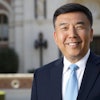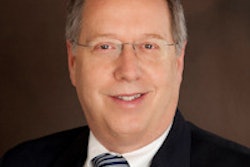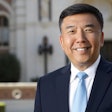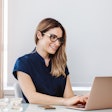
A trip to the dentist can make even the most easy-going child nervous. A new study from Israel suggests that altering the sensory environment in the office -- particularly sound and lighting -- can considerably lower children's anxiety, especially for those with developmental disabilities.
"Many children are subjected to unnecessary pain and suffering and often fail to cooperate and overcome fear during healthcare treatment," wrote the authors (Journal of Pediatrics, February 23, 2009).
They propose that apart from traditional modes of anxiety management -- such as conscious sedation, stress-reducing medical devices, behavioral relaxation, and pharmacologic analgesic -- another option is sensory adaptation of clinical environments.
"Sensory adapted environment (SAE) has been proposed to improve the quality of life of varied populations sustaining anxiety, pain, and unrest, including individuals with developmental disability, Alzheimer's disease, or traumatic brain injury," the authors wrote. "The physical environment includes special lighting effects, relaxing music, vibration, and aromas."
Numerous studies have looked at dental anxiety in children -- particularly children with behavior control issues (International Journal of Dental Hygiene, May 2005, Vol. 3:2, pp. 83-87; International Journal of Paediatric Dentistry, November 2007, Vol. 17:6, pp. 391-406; European Archives of Paediatric Dentistry, February 2008, Vol. 9:Suppl 1, pp. 29-35; International Journal of Paediatric Dentistry, March 2009, Vol. 19:2, pp. 115-120).
This is the first study to focus on altering the sensory environment as an alternative method of stress reduction, according to lead author Michele Shapiro, M.S., of the Issie Shapiro Educational Centre in Raanana, Israel.
Shapiro and her colleagues chose a dental office for the study because it served as a suitable model, they noted. Fear factors at dental clinics include noises, odors, bright lights, intrusive contact, and anticipation of pain.
"Lighting, touch, the angle of the dental chair, deep pressure can all make an impact on a client and help him/her to feel more comfortable during anxiety-provoking procedures," Shapiro stated in an e-mail interview with DrBicuspid.com. "Once the dental staff recognize this need and offer this alternative, we may find that there is a reduction in pharmacological use and perhaps even reduction in general anesthesia in some cases."
The researchers looked at the influence of a sensory adapted environment on 35 children between the ages of 6 and 11, each scheduled for two routine dental cleanings. Sixteen of the children had developmental disabilities.
"It is known that children with developmental disabilities need more intensive dental care, and we were interested in knowing if SAE could benefit them along with the typically developing children," Shapiro said.
For each child, one dental visit took place in a typical dental environment, with fluorescent lighting and overhead dental lamps. During the other visit, the children were treated in a sensory adapted environment without overhead fluorescent lighting or overhead lamps. Instead, dimmed fluorescent lighting and a slow-moving repetitive color lamp were used. The dental hygienist wore a head-mounted lamp directed into the patient's mouth. The children listened to soothing music and were wrapped in a heavy vest to create a hugging effect.
The researchers found that while the adapted environment had a significantly calming effect on all the children, those with developmental disability relaxed to a greater extent. This was observed by duration of negative behaviors and electrodermal activity before and during professional dental treatment.
The duration of anxious behavior -- both behavioral and physiological -- dropped from an average of 3.69 minutes to 1.48 minutes in typical children and 23.44 minutes to 9.04 minutes in children with developmental disabilities.
"This study demonstrates that in the context of delivering medical and dental care to both typical and the very challenging group of children with developmental disability, a sensory controlled environment may represent an important substitute for the commonly used alternatives of pharmacological sedation or even general anesthesia," the authors noted.
Although this technique may not be suitable for all dental procedures and all clients, it can certainly be implemented into daily practice, Shapiro noted.
"We would not like the dental staff to simply see this as the purchasing of equipment only, but rather as a process of learning about the different sensory systems and their influence on behavior," she said. "The deeper understanding would facilitate enhanced utilization of the sensory adaptation during different dental procedures."
This approach could help to cushion the awareness of the client toward aversive sensory stimuli by offering more gentle stimuli, thus reducing the anxiety, Shapiro explained. It also appears to make the dental staff feel more relaxed, she added.
"I hope there will be many more research projects in this field, and that, in the future, more people will feel calmer in the physical environment," she concluded
Copyright © 2009 DrBicuspid.com



















